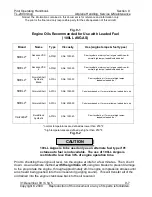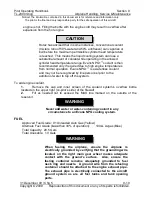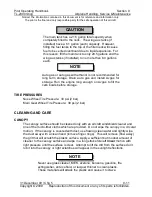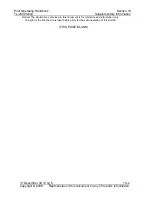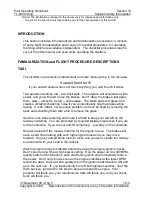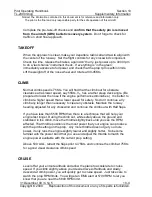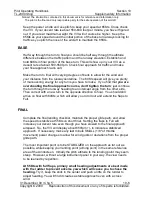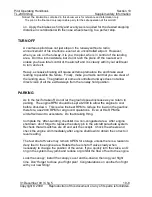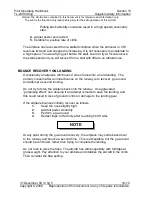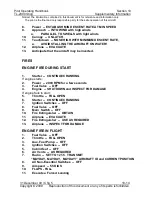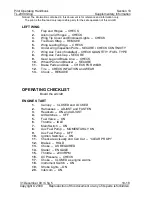
Pilot Operating Handbook
Section 10
TL-2000
Sting
Supplementary Information
Notice! The information contained in this document is for reference and information only.
The pilot is the final and only responsible party for the safe operation of this aircraft.
31 December 09 / Chg 5
10-8
Copyright © 2009 Reproduction of this document or any of its parts is forbidden.
on. Apply the brakes as firmly and evenly as is required for the desired stopping
distance in coordination with the nose wheel steering to a perfect stop.
TURN OFF
A courteous pilot does not just stop on the runway without a radio
announcement of his intentions, even at an uncontrolled airport. However,
when you are on the runway, it is you, the pilot, who is in control of the landing
area. Don’t be inconsiderate, but do not rush the plane off the nearest exit
unless you have total control of the aircraft and it is clearly within your skill level
to turn and exit.
Heavy, excessive braking will cause extreme premature tire and brake wear
leading to possible tire failure. Finally, make your radio call that you are clear of
the landing area. The gradient at some uncontrolled runways does not allow
direct vision of all the exit taxiways from the runway hold position.
PARKING
As in the taxi for takeoff, do not let the ground speed increase as you return to
parking. The engine RPM should be kept at 2000 to allow the engine to cool
before shut-down. This is also the best RPM to reduce the load on the gearbox,
therefore, use 2000 RPM for all ground operations. Even at this RPM the
aircraft will want to accelerate. Do that braking thing.
Complete the ‘After-Landing’ checklist in a non-congested area. After engine
shutdown, don't forget to replace the safety pin in the aircraft parachute system.
Recheck that all switches are off and exit the cockpit. Chock the wheels and
check the engine oil immediately after engine shutdown to obtain the correct oil
level reading.
The fuel shut off valve may remain OPEN for storage unless there is a reason to
deny fuel to the engine area. Rotate the fuel shut off valve slowly when
necessary to change the position of the valve. If you quickly turn the valve, an O
ring in the system may jamb and reduce or prohibit the flow of fuel to the engine.
Lock the canopy; install the canopy cover and tie-downs; then log your flight
time. Don't forget to close your flight plan! Congratulations on another fun flight
with your new Sting!


